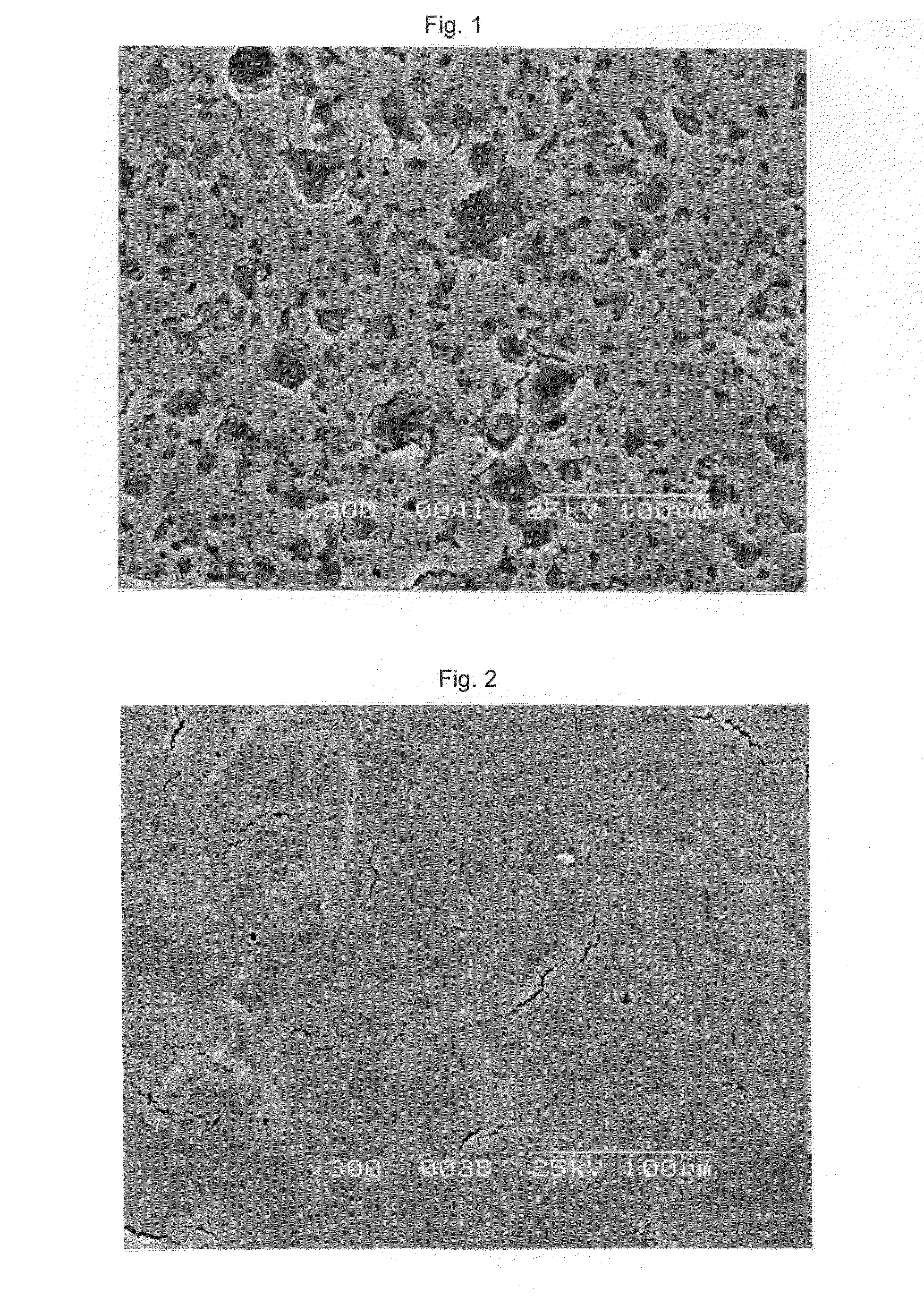Thermal recording material
a recording material and thermal recording technology, applied in thermography, printing, duplicating/marking methods, etc., can solve the problems of degrading the printed image quality, limiting affecting so as to improve the head matching effect, and improve the thermal recording
- Summary
- Abstract
- Description
- Claims
- Application Information
AI Technical Summary
Benefits of technology
Problems solved by technology
Method used
Image
Examples
preparation example 1
[0059]8 Parts of sodium sulfate and 100 parts of tapioca starch were added to 100 parts of water and fully stirred. The resultant starch slurry was adjusted to a pH of 11 with a 3% sodium hydroxide aqueous solution, and 0.3 part of sodium trimetaphosphate was added. The resultant mixture was allowed to react at 40° C. for 8 hours, and then the reaction mixture was neutralized with hydrochloric acid, washed with water and dried to give a crosslinked starch. Further, this crosslinked starch was dry-pulverized with a ball mill, 10 parts of the pulverized crosslinked starch was dispersed in 100 parts of water, and the dispersion was heated at 80° C. for 30 minutes and cooled to room temperature. Then, the dispersion was filtered through a mesh having openings of 100 μm each, and the thus-obtained filtrate was dried to give a swellable starch 1.
preparation example 2
[0060]A swellable starch 2 was prepared in the same manner as in Preparation Example 1 except that the amount of sodium trimetaphosphate was changed from 0.3 part to 6 parts.
preparation example 3
[0061]A swellable starch 3 was prepared in the same manner as in Preparation Example 1 except that the mesh having openings of 100 μm each was replaced with mesh having openings of 200 μm each.
[0062]Table 1 shows swelling degrees and volume average particle diameters in swollen state of the swellable starches 1 to 3 and a swellable starch 4 (F6493, supplied by Emsland Staerk GmbH).
[0063]
TABLE 1SwellingVolume average particledegreediameter in swollen stateSwellable8.532 μmstarch 1Swellable1.217 μmstarch 2Swellable8.2110 μm starch 3Swellable7.520 μmstarch 4
PUM
| Property | Measurement | Unit |
|---|---|---|
| volume average particle diameter | aaaaa | aaaaa |
| volume ratio | aaaaa | aaaaa |
| volume average particle diameter | aaaaa | aaaaa |
Abstract
Description
Claims
Application Information
 Login to View More
Login to View More - R&D
- Intellectual Property
- Life Sciences
- Materials
- Tech Scout
- Unparalleled Data Quality
- Higher Quality Content
- 60% Fewer Hallucinations
Browse by: Latest US Patents, China's latest patents, Technical Efficacy Thesaurus, Application Domain, Technology Topic, Popular Technical Reports.
© 2025 PatSnap. All rights reserved.Legal|Privacy policy|Modern Slavery Act Transparency Statement|Sitemap|About US| Contact US: help@patsnap.com


